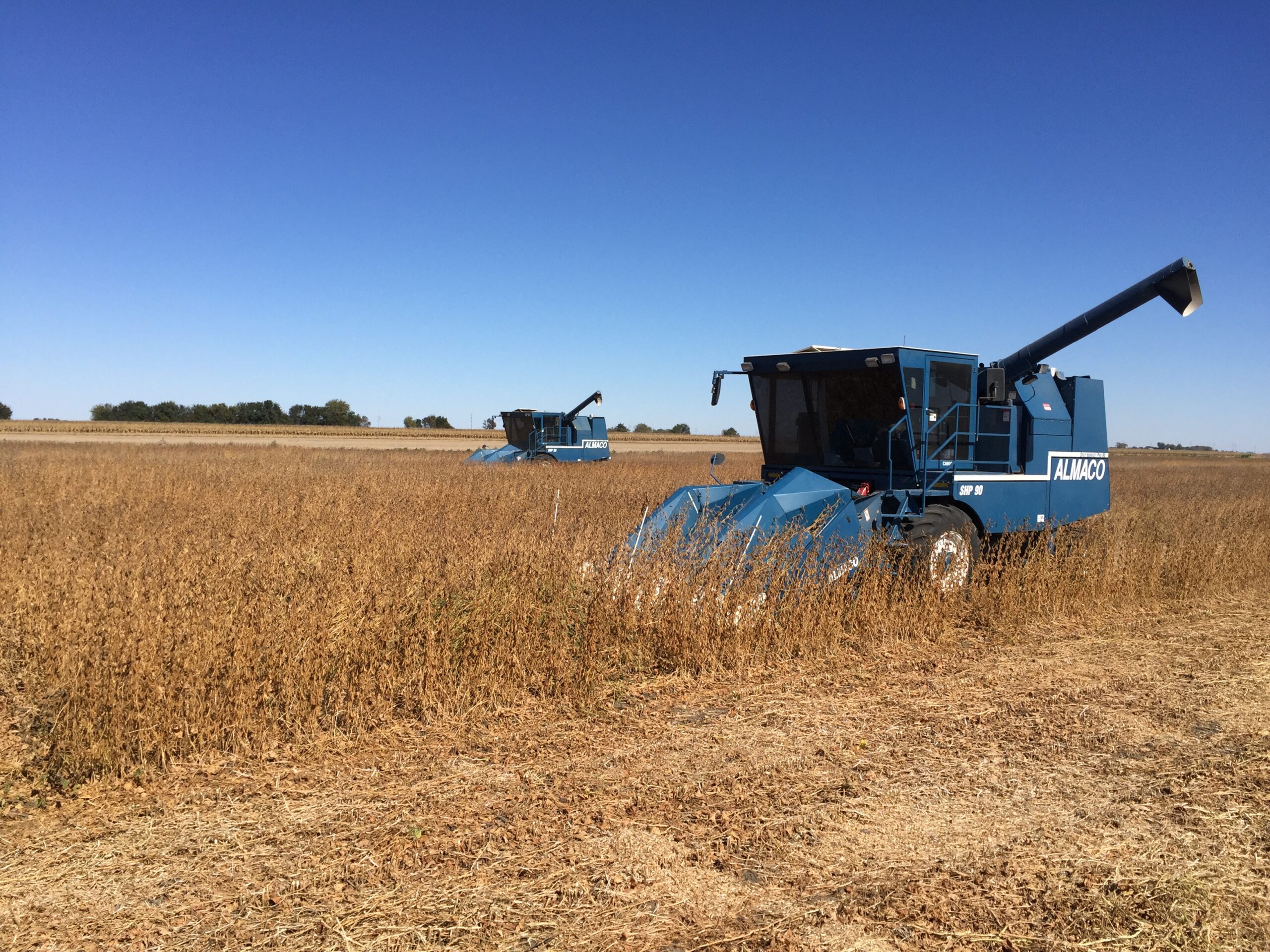As we near the middle of October, the harvest season is at its peak for much of the region. This is the time farmers can see the results of their decisions from the past year as well as a time to decide what to plant next year. Since yield is the main driver for farmers, the goal is to harvest each crop to obtain maximum yields. However, in our breeding organization, we harvest in very much the same way a farmer does, except it is the data that we covet. The farmer takes the grain we harvest, but the data on every plot is what we rely on to bolster our decisions. Advancement decisions are the decisions that we make to move a variety or hybrid to the next stage of testing. Deployments are when the breeding teams and the commercial teams decide what has the merits to be sold to a farmer.
Advancements are organized by maturity for each crop. Typically, each maturity has a few key people who preside over the process and know the hybrids/inbreds or varieties very well. The advancement process relies heavily on other scientists and IT teams to ensure the data packages the teams use are correct and have gone through the proper QAQC checks. The advancement process for each maturity will take about a week. There are data reviews with the field testing teams to ask and understand any issues from the field. Then there is a pathology review where the team is presented with the good, bad, and the ugly for each of the major diseases of concern. Once those reviews are done, it is time to start advancing within each stage of testing.
For hybrids or varieties in the first year of testing, there are fewer locations of this material but often many more candidates. These typically advance mainly based on data-driven decisions, which means the team sets thresholds for the agronomic traits of concern and essentially reviews what meets or exceeds those thresholds. Bayer has also recently partnered with an external company, AbacusBio, to index the germplasm with an overall score based on their expertise in traits and economic preferences from consumers and growers. This index applies weights to agronomics and performance all in one to try enable a cleaner way to sort through candidates. As the hybrid/variety gets closer to the final stages of testing, there is more scrutiny, more locations are added, and other specialized testing is conducted to ensure only the best move forward.
The advancement process for each crop can become very complicated as other considerations must be accounted for. Corn has a more complicated process since it is a hybrid crop. The inbreds, which are required to make the hybrid, are also being evaluated and tested for their performance. There are characteristics that are measured for each inbred that collectively assign the inbred a cost of goods (COGS) score. If an inbred cannot be produced, or it has a very poor score, it is dropped because it would not be a reliable producer of a hybrid. Another aspect to consider is how well a male and female work together. If the flowering of the two inbreds is too wide, it is often very difficult to have predictable success in a field production setting.
Traits are another aspect that can complicate the process. In the U.S., corn hybrids have more trait combinations for both insects and herbicides compared to soybeans, which only have herbicide traits for pests. The inbreds also need to have the appropriate traits to produce a fully traited hybrid. Traits are not added to the inbreds until they pass enough stages of testing. In the first few years, a hybrid is tested as a conventional hybrid.
The last stage of field testing consists of candidates that are being highly scrutinized by both the breeding teams and the commercial teams. These are the candidates considered for deployment. This is the point where the transition from breeding to commercial happens. The breeding teams try to best characterize the hybrid/variety, but the commercial teams must consider placement, how growers would benefit from the product, and how the new product fits into the current brand offerings. The commercial teams also walk and observe these candidates. For some brands, the products need to be a broad-acre fit with limited agronomic concerns. Other brands can have regional fits and can be placed in certain geographies that would best benefit the growers. Bayer also out-licenses germplasm, so many of these deployable candidates will find a home in either a Bayer brand or other seed company brands.
As the breeders and scientists work through what moves on and what doesn’t, another group ensures that the right inbreds/varieties are planted in winter production. Winter production allows seed companies another growing season to either increase volumes and/or produce hybrids for testing the following season. Since there are crop cycle deadlines, it is important to work through the advancement process swiftly to ensure enough time for processing, shipping, and planting in the winter fields. It also can highly impact planting the following spring if our teams do not have seed returned from winter.
The breeding process is very cyclical every year. It can be become very complicated as new traits and/or phenotypes enter the breeding testing programs. However, the goal for any breeding team is to produce new hybrids/varieties that will provide growers with a reliable crop. New pests, emerging technologies, and evolving consumer demands continue to offer challenges in growing desired crops reliably. Breeding is the foundation to having a crop our society can thrive on.
More on the Abacusbio/Bayer collaboration here: https://www.seedtoday.com/article/212191/abacusbio-and-bayer-collaborate-to-further-accelerate-bayers-global-crop-breeding-programs



 and then
and then